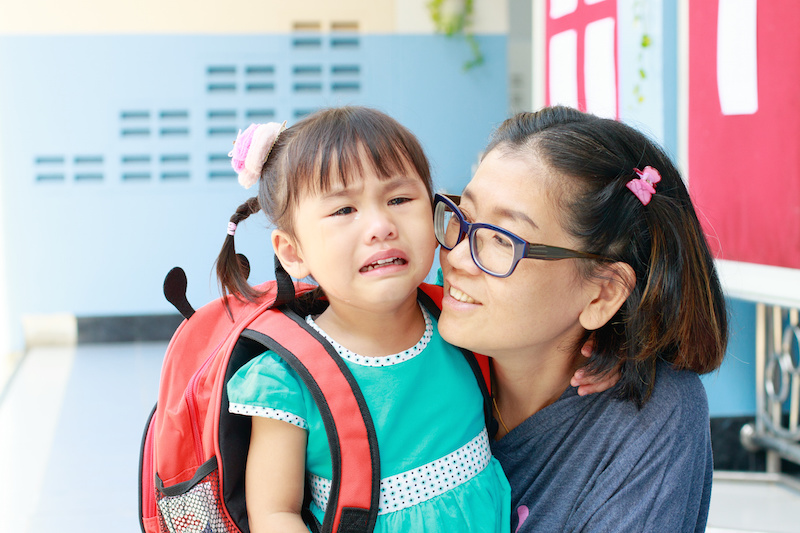
Entering into a new earlychildhood arrangement can be an emotional experience for both parent and child. However, careful planning, and the knowledge that some separation anxiety and tears are normal, can make the transition from parent to service as pleasant as possible.
How quickly the child adapts depends on a number of factors including: the child’s age and stage of development; the child’s past experiences in the care of others; the skills of the educator and appropriateness of the new setting; and the adults’ ability to prepare themselves and the child for the separation. Here are some strategies to help make the process go smoothly:
-Ask families about their child’s likes and dislikes, their expectations and goals, eating and sleeping patterns, fears. So that you as the educator can best understand the needs of the child.
-Encourage, where possible, families to have orientation visits or attend shorter hours in the first 2 weeks. This will assist the child in “easing into” their new routine and can make the transition less overwhelming for them.
-Let children bring something from home that provides them with comfort, such as teddy or a blanket. Most children will have something they are attached to, and this helps them feel safe. Taking these off children within the first 6 weeks can be very traumatic and should be avoided.
-Assist families in developing a good morning and goodbye routine. Keep it positive and consistent so the child learns what to expect and usually the child will settle much quicker if their parent/s appear happy and relaxed rather than stressed, upset or inconsistent.
-Accept and acknowledge the way the child feels… it is NOT OK to tell a child “to stop being a baby” or “stop crying mum will be back soon”… because she won’t be … she’ll be back at the end of the day and for an upset child this is a long time!!! We need to empathise with the child… “I understand you’re upset. It’s OK. I am going to look after you today, how about we find something you like… I think we have trains over here and I know you like those…”
-Create a visual routine so children can see what is coming next… not too many photos though as that can make the day appear very long!
-Provide children and families with photos and a short story about their educators to place on the fridge at home. This can be a great talking point at home and help make connections between home and the centre.
-Mealtimes can be a struggle so ensure mealtimes reflect what children may eat at home as this can also assist in feeling safe and settled
-Ask the child if they would like a cuddle and if they don’t like this then stay close, check in with them verbally and non-verbally.
-Create a “secure base”. This is when one educator places themselves in the environment so that children can come to this educator for support and to feel safe… they may leave and return and it is important that educators take turns and creating this secure base.
Try to understand this is also a tough time for parents
-Some parents have a very hard time leaving their child… in reality you are a stranger!! So, listen to how parent’s feel, tell them it’s OK, they can call as many times as they like during the day.
-Chat with families about their child. It is important that families feel that you care for, like and respect their child!
-You can even email / message them during the day along with a picture of their child settled and playing.
-It is much more than just saying “they had a great day”… be specific… parents want to know what they ate, how they settled if they played with another child, what they enjoyed… try to be as specific as possible!
-Know parent’s names… this is important to ensure families feel welcome and safe and this will influence the child.
-Look at families as partners in the education process! They are great resources!!!
The more time & energy we put in now, the more authentic meaningful relationships we will have in the future.
Leave a Reply